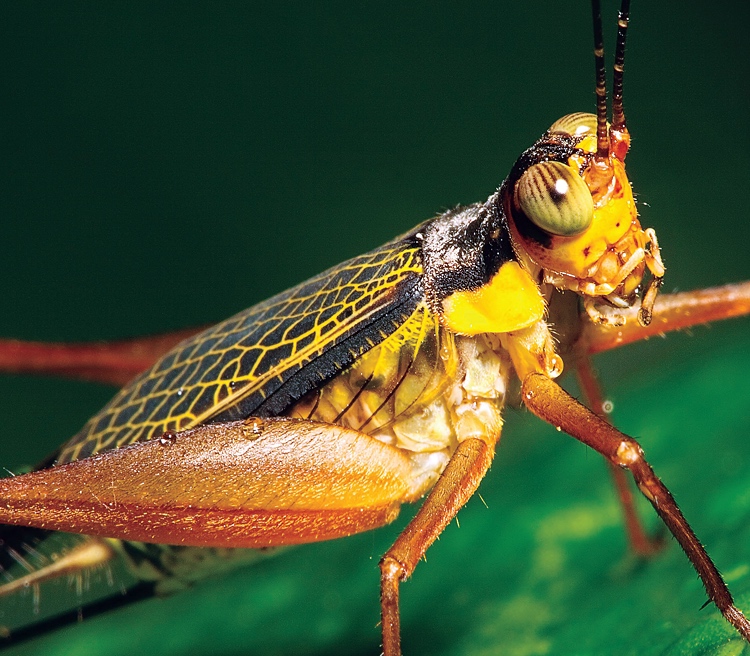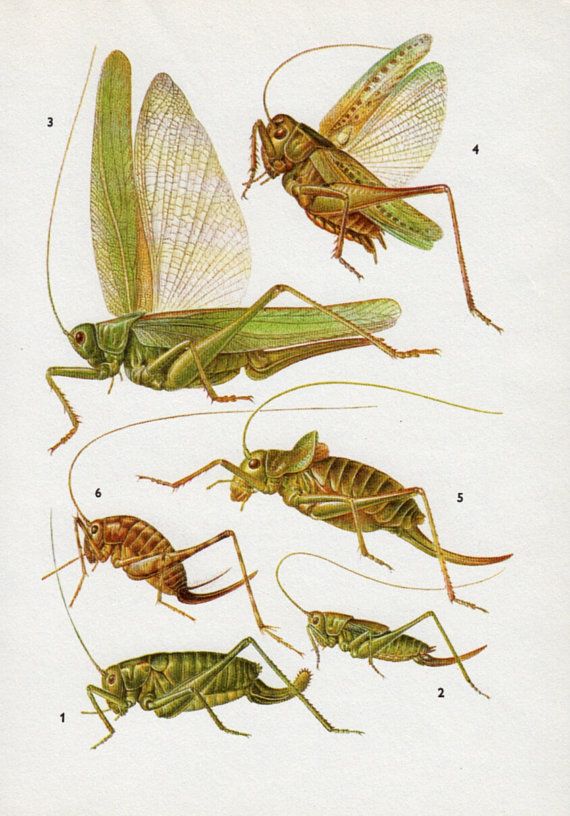
A Watts-Strogatz network; inset. [o]
'A Syncrony at Night'
by Susanne Severeid
It was when my son was about eight years old. We were driving home from grocery shopping, and I still had a list of errands a mile long. I was tired, and stressed, and thinking only of what I hadn’t yet managed to get done that day. It was already late in the afternoon and I was wondering how on earth was I going to get it all done.
It was one of those late spring, not-quite-summer, days when the temperatures have warmed up and the sun lingers longer in the dusky sky just before sundown. As I pulled into our driveway, car windows rolled down, he pestered me to stop the car. Now.
“Why?” I asked, somewhat annoyed.
“Please, Mom. Just stop,” he pleaded.
I had no idea what he wanted, and I was in no mood for it. But we were home now so I shrugged, shut off the engine, and turned to him in the passenger seat.
“Okay,” I asked, “What is it?”
“Just listen,” was all he said. He sat silently next to me, looking straight ahead.
I left the key in the ignition and did as he asked. I closed my eyes and took a deep breath. It took a full minute, perhaps even longer, but I remember the moment perfectly. I heard it and I knew.
I turned to him. “The crickets,” I said. “You wanted me to hear the crickets.”
“The crickets,” he said softly. The chirping song of the crickets in our yard was actually quite loud, and yet I’d been totally unaware of it, a symphony of nature’s beauty drowned out by my busyness and inattention. Another world entirely that he, with his child’s sense of wonder, had so clearly heard, understood, and appreciated.
We both sat there for some minutes, and I let the peace of that experience wash over me. Many years have passed since that warm, late afternoon, when my boy was small and I was younger. When the fragrant lilac bush near the walkway was just beginning to bloom, and the summer roses climbing up the trellis at our front door were still only fresh green buds.
Many years have passed, but I’ll always remember and cherish that moment when my son taught me the beauty of the crickets’ song. I am grateful that I did listen. And I try to remember that when I need to slow down, when I need to step away from the computer, and the chores, and all of the “stuff” that we spend our days so busy doing. That’s when I need to listen with a child’s ears to the healing calm of nature’s song. ≈ç

'Friends, Brains and Crickets: a (Scientific) Love Story
by Mark Humphries
On June 4th it will be twenty-three years since Duncan Watts and Steve Strogatz published their epochal paper “Collective Dynamics of Small-World Networks’’ in Nature. It is my favourite paper of all time. Elegantly written, the weightless prose outlined a staggeringly simple idea, yet hid a staggering depth of work.
And that simple idea changed the lives of thousands of scientists, creating a whole new field of research. Research into how people are connected, how disease spreads, how rumours start, how music and fashion changes, how to stop power grids from browning out, or the internet from collapsing. Which means this paper likely changed your life too.
It all started with crickets. The chirpy buggers. Steve Strogatz was and is fascinated by anything that synchronises. And crickets sure do love to synchronise their chirps, the irritating insect. So he set his graduate student Duncan Watts the task of working out how a bunch of crickets in a field could synchronise together, how they listen to each other and subtly adjust the timing of their chirps to match the others.
Watts recalled six degrees of separation — that there was a short chain of five acquaintances between any randomly chosen person and the President of the USA.
Watts ran into a problem: how to represent the way the crickets listened to each other. If you just assumed that crickets listened to their neighbours, then they’d never synchronise, for as the chirping aligned in one little group on one side of the field, it wouldn’t synchronise with the chirps on the other side. You could assume that every cricket had telepathic knowledge of every other cricket so that they were all linked. But crickets are not, to our knowledge, telepaths. Actually, now he came to think about it, there were lots of ways in which crickets could listen to each other.
So Watts started thinking about representing the crickets in a way he could play with. Make each cricket a node, and the link between a pair of nodes is then a pair of crickets that could hear each other. Great. What then was the best pattern of links for synchronising the cricket’s chirping?
Well, presumably something where one cricket could hear many other crickets in its group (and they could hear each other), yet any cricket was only a few links from any other. That way each group could synchronise locally, yet transmit that synchronisation to all other groups quickly.

Vintage illustration of cricket species, source unknown. [o]
But what was that pattern of links? It wasn’t a regular pattern, for that would have crickets far apart; and it wasn’t a random pattern, for that would not have each cricket hearing many other crickets in its group. It was as though the pattern of links needed to be between regular and random.
But what was between regular and random? Contemplating this problem, Watts recalled the urban legend of six degrees of separation — that there was a short chain of five acquaintances between any randomly chosen person and the President of the USA (this used to be considered a good thing). This had to be a clue. People sit in their local groups of friends, yet according to legend there is just a few links of acquaintance joining widely differing people. Social networks seem neither regular nor random.
So Watts asked his boss, Strogatz: “Hey boss, what’s between regular and random?” The reply: “no one knows. But it’s a cool problem. So let’s find out”.
Their famous model boiled down the answer to its bare essentials. It tuned a single network between regular and random to reveal what was “in between”.
Let’s start at the regular end. Take a ring of nodes, and add to each the same number of links. Like this:

A regular network, made by a ring of nodes. Nodes close together are inter-linked; but to get to the other side of the ring means crossing many, many links.
That’s a regular network, in which each node sits in a group, as its neighbours also tend to be each others’ neighbours. But to get one from side of the ring to the other takes many, many jumps across many, many links.
Now let’s skip to the random end. We do this by re-wiring the regular network. Randomly select a link sticking out of one node, and re-wire that link to any randomly chosen other node. Do that to every link, and the end result is a random network: it takes now just a few links to get from any node to any other, but the neighbourhoods of tightly inter-linked nodes have been destroyed. Like this:

A random network on a ring of nodes. The nodes are still laid out in a ring, but now almost every link has been rewired: so we can cross the ring quickly, but neighbouring nodes are no longer inter-linked.
Watts and Strogatz’ breakthrough was to realise that something special would happen if you rewired just a handful of links. Re-wire just a few and, suddenly, the average number of links between any two nodes becomes tiny. Yet all nodes are still heavily linked into their local groups. Like this:

A small-world network on a ring of nodes. With just a handful of rewired links, it takes now on average about two links to cross from one side to the other. Yet neighbouring nodes are still interlinked.
Dang, that looked like a network of society, a network of groups of friends linked by acquaintances. Where you might be linked to anyone else by a short chain of friends, giving you the sensation that it was a small world, after all. And lo, they called it: the small-world network.

The whole model: take a ring of nodes, connect locally with a few links each, and set a probability (p) of rewiring each link. With p=0, the network is regular; with p=1, the network is random. But when p is just a bit more than 0, a small-world network results.
The whole model: take a ring of nodes, connect locally with a few links each, and set a probability (p) of rewiring each link. With p=0, the network is regular; with p=1, the network is random. But when p is just a bit more than 0, a small-world network results.
Every real-world network they tested turned out to be a small-world. The network of appearances in the same films by actors. The power grid network of the Western USA. The nervous system of the tiny worm C Elegans.
It turned out that basically anything we can describe as a network is a small-world. The network of social interactions between dolphins in Doubtful Sound, New Zealand. The internet. The Marvel Comic universe. Train networks in India. The protein interactions of yeast. Roget’s Thesaurus.
So this simple idea launched a thousand careers. For if we’d missed such a simple idea about the world until 1998, what else had we missed about the world? What else could networks tell us? Researchers rushed in from all walks of life in academia, from pure maths, through statistical mechanics, on to computer science, across molecular biology, genetics, and neuroscience, to ecology, literary theory, and even palaeontology.
They all found in networks the lodestone they’d been searching for, a unifying idea to describe their data. And so networks now became the foundation of research into how diseases spread, how genes interact, how social networks function, how social media can be hijacked for nefarious ends, how to protect power grids and the internet from attack, and how to search through any network. All of which has changed the world we live in.
Incredibly much of this work was anticipated in Watts and Strogatz’ paper. They spent much of its length explaining this small-world model of a network clearly, so that everyone could understand it. And everyone did.

"Just walkin' through some tall grass, guess what jumped out?" Miles City, Montana, 1937. [o]
But towards the end it suddenly shifted gear to get into the deep implications: what does this small-world mean for how the system behaves?
(The “dynamics” of the paper’s title. To get an idea of how deep this final section, Watts wrote a book in 1999, Small Worlds: The Dynamics of Networks between Order and Randomness, that was essentially the full version of the paper. Each sentence in the final paragraph of results in the paper was one long chapter in the book. Ouch.)
For surely something tuned between regular and random would not behave the same as either a regular or random network. And indeed, the results were rich and deep and delightful.
They first tackled the dynamics of how viruses spread. If we want to know how an infectious disease — the flu, say — spreads, then we need to know how people come into contact. And Watts and Strogatz now had on their hands the very best model of contacts between people. So they simulated a simple model of how infections spread between people by contact: choose a small number of initially infected people, choose how infectious the disease is — how likely a person is to catch it after being in contact with an infected person — and watch the infection spread across the links. As you might suspect, on their small-world networks infectious diseases spreads very easily, much more easily than in the standard models used by epidemiologists. This paragraph of the paper launched a whole new way of thinking about the spread of disease
They tackled cellular automata — simple systems where each node dumbly obeys a simple rule based on what its neighbours are doing. But on a small-world network its neighbours are both near and far: this led to some mind-bendingly complicated dynamics from simple rules. They tackled games, where nodes represent players co-operating or competing for rewards, like the famous Prisoner’s Dilemma. Both of these kick-started research programmes into the deep lessons of simple dynamics on complex networks. Ecology, the study of how species interact, was revolutionised by the study of these simple dynamics, as ecologists set about applying these lesson using their networks, networks representing who eats or co-operates with who.

A Watts-Strogatz network. This example with parameters of (n = 1,000, K = 8, p = 0.04), generated in Mathematica 10 by Wolfram Research, has CC = 0.6170 and DS = 4.1531. Nodes are distinguished by different sizes and colors representing their degrees ranging from from 13 to 19. (Got that?) [o]
And finally they tackled synchrony, closing the loop on where they’d started, a nod to the cricket problem that kicked it all off. They made each node into an independent little oscillator, and watched what happened as they tuned the network from regular to random. Just as Watts had guessed at the start, they found that just a few rewired links were enough to cause synchrony across an entire network.
A result they presciently predicted would have great implications for neuroscience. And indeed the whole of what we now call “network neuroscience” was born of this paper, thanks to the early work of, amongst others, Olaf Sporns, Ed Bullmore, Sophie Achard, Dani Bassett, and Marcus Kaiser. (Like Pooh Bear, I also had a little something, and something else.)
Scientific papers are universally dull, dry affairs. They report new results in precise language, with little scope for flair. We scientists read them, assimilate their message — and if expert in the area may take a close, eyebrow-arched look at their methods, results and interpretation.
We do not jump up and down in excitement when reading. We do not then rush off to tell all our friends about the paper we just read. About how much we loved it. Watts and Strogatz’ small-world paper evoked these reactions. Twenty years later people still remember the sensation of reading it for the first time. The fervour it created was remarkable, has lasted for two decades, and shows no sign of dying out. It created “network science”. It’s extraordinary legacy has touched the lives of millions, perhaps billions of people. How can one little paper have spread so far, have such an extraordinary impact? Well it is a small world, after all… ≈ç
TWO BOOKS WORTH READING RELATED TO THIS ARTICLE
Small Worlds: The Dynamics of Networks between Order and Randomness, by Duncan J. Watts, Princeton University Press (1999).
The Spike: An Epic Journey Through the Brain in 2.1 Seconds, by Mark Humphries, Princeton University Press (2021).

MARK HUMPHRIES is a theorist and systems neuroscientist who uses computational and statistical models rather than animal models to study the brain. He is the Chair in Computational Neuroscience, Faculty of Science, University of Nottingham. View Mark's site. This article was first published in The Spike.
SUSANNE SEVEREID is an author and actor/presenter working in journalism, television and radio. Her books include When Someone You Love Is Dying: Some Thoughts to Help You Through and Mocha Musings: Reflections on Life, Love, and Chance Encounters. Susanne lives in Ashland, Oregon. View Susanne site.

Comments
Fantastic article the…
Fantastic article! The diagrams are inspiring and fortify our work with networks, as with crickets. Thanks to Susanne Severeid and Mark Humphries for showing us again that nature is our main teacher.
Add new comment